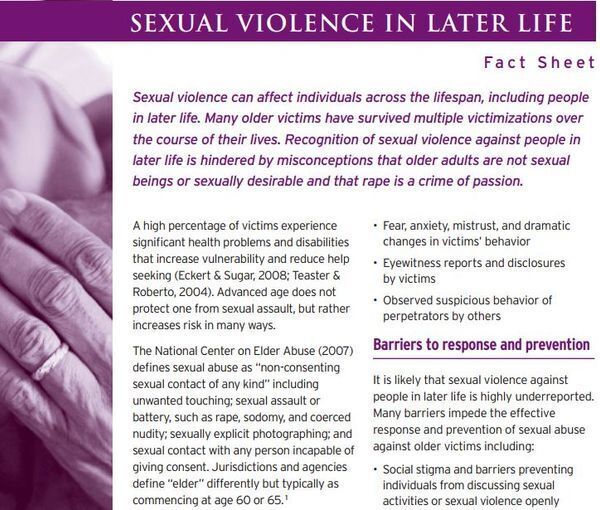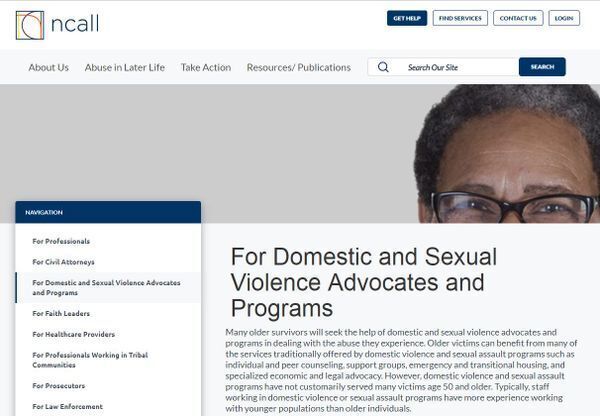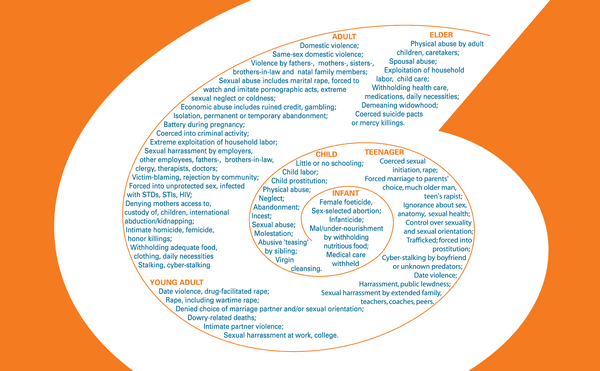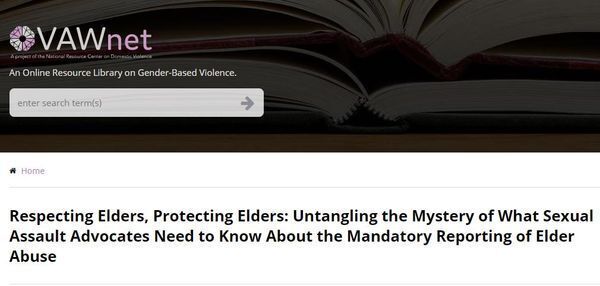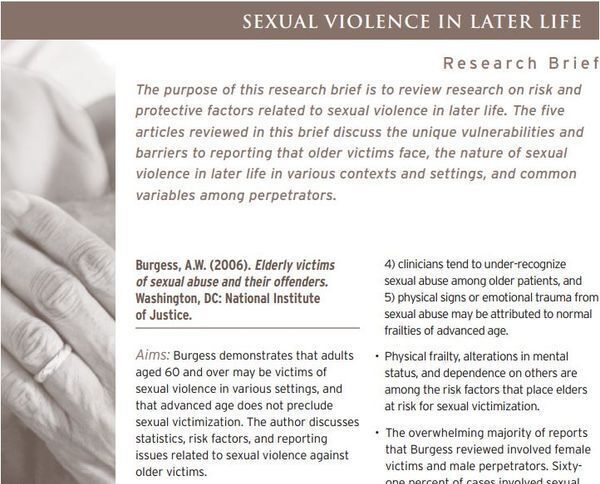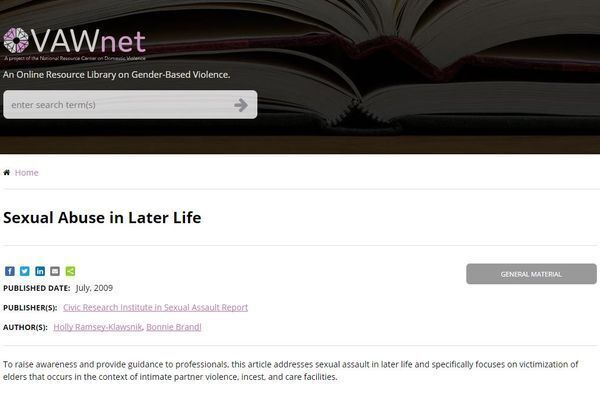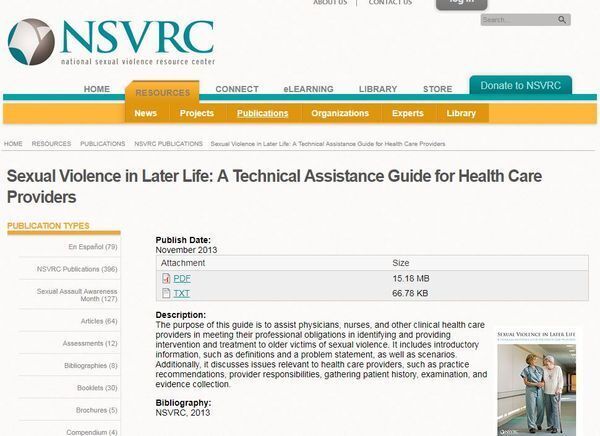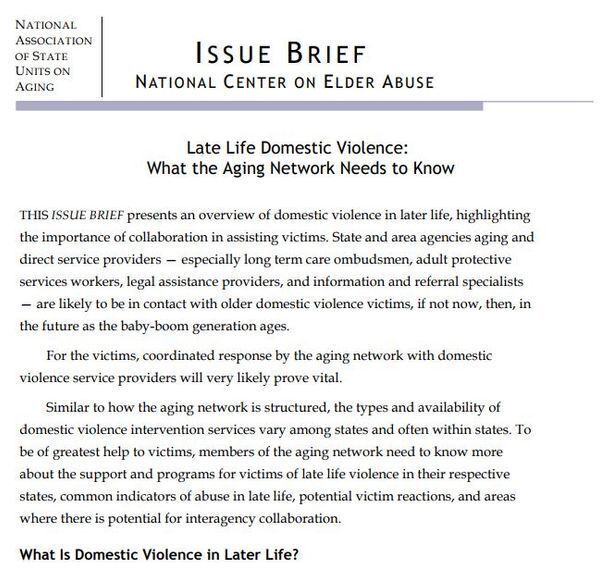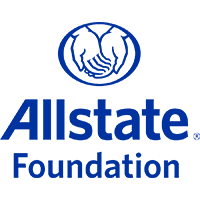-
National Sexual Violence Resource Center provides a fact sheet on the case of violence in later life. Due to age-related physiological changes, older victims tend to sustain more serious physical and psychosocial injuries during an assault than younger victims. But there are signs and symptoms for a person to discover the violence.
-
As we all know sexual violence can affect individuals across the lifespan, including people in later life. Older victims can seek help from domestic violence programs. "For Domestic and Sexual Violence Advocates and Programs" toolkit from National Clearinghouse on Abuse in Later Life - NCALL offers resources for domestic violence service providers to better serve older survivors.
-
From the aborting of female fetuses to intimate homicide, girls and women may encounter numerous oppressions during infancy, childhood, adolescence, adulthood, and as elders. Some of these are confined to one stage in the lifecycle, some continue into subsequent stages. The spiral shows the presence of different abusers over the life course.
-
The purpose of this article is to strengthen advocates’ and coalitions’ capacity to analyze their reporting and confidentiality obligations and to help them located the information they need to analyze how to provide safe and victim-centered advocacy.
-
This brief reviews researches on risk and protective factors related to sexual violence in later life. The five articles reviewed in this brief discuss the unique vulnerabilities and barriers to reporting that older victims face, the nature of sexual violence in later life in various contexts and settings, and common variables among perpetrators.
-
An article from National Clearinghouse on Abuse in Later Life website that addresses sexual assault in later life and specifically focuses on the victimization of elders that occurs in the context of intimate partner violence, incest, and care facilities.
-
The purpose of this guide is to assist physicians, nurses, and other clinical health care providers in meeting their professional obligations in identifying and providing intervention and treatment to older victims of sexual violence. It includes introductory information, such as definitions and a problem statement, as well as scenarios. Additionally, it discusses issues relevant to health care providers, such as practice recommendations, provider responsibilities, gathering patient history, examination, and evidence collection.
-
This issue brief from National Center on Elder Abuse presents an overview of domestic violence in later life, highlighting the importance of collaboration in assisting victims. Domestic violence in later life occurs when a person uses power and control to inflict physical, sexual, emotional, or financial injury or harm upon an older adult with whom they have an ongoing relationship. The aggressors include spouses and former spouses, partners, adult children, extended family, and in some cases caregivers. The problem occurs in all communities and affects people of all ethnic, cultural, racial, economic, and religious backgrounds. Although most victims are female, men can be harmed, too.


